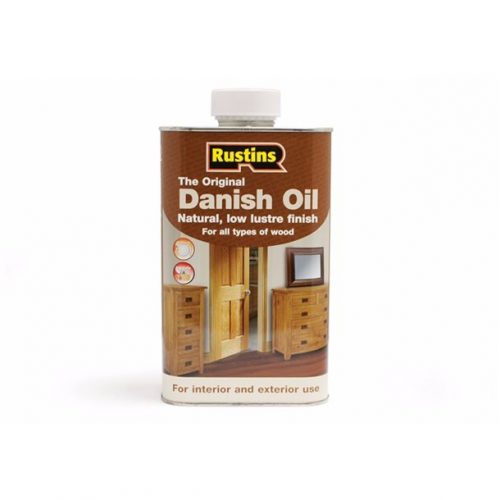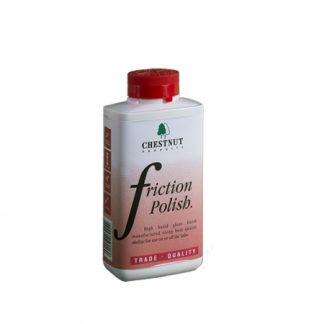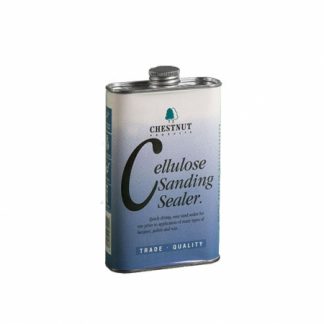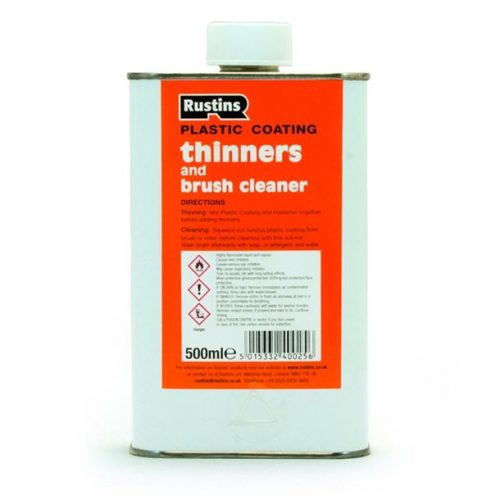-

 A unique formulation developed by Rustins that is suitable for all types of wood. It differs from Teak Oil in that it contains special ingredients to give it a low lustre finish. It is an easy to use wipe on finish, which brings out the beauty of the timber and gives a natural, open grained, soft lustrous finish. Ideal for all woods and is excellent on turned woodwork. Danish Oil conforms to The Articles in Contact with Food Regulations and to the Toys (Safety) Regulations 1995, BS:EN71 Part 3.
A unique formulation developed by Rustins that is suitable for all types of wood. It differs from Teak Oil in that it contains special ingredients to give it a low lustre finish. It is an easy to use wipe on finish, which brings out the beauty of the timber and gives a natural, open grained, soft lustrous finish. Ideal for all woods and is excellent on turned woodwork. Danish Oil conforms to The Articles in Contact with Food Regulations and to the Toys (Safety) Regulations 1995, BS:EN71 Part 3.
-

 Friction Polish is a shellac based polish ideal for creating a high gloss finish on or off the lathe. It’s a great decorative finish and is ideal for small items but can be difficult to apply to larger items on the lathe (over about 8 inch diameter). The high amount of shellac in Friction Polish does two main things. Firstly it helps seal bare wood and give it a great shine, which is good. Sadly the price of this commodity shot up a few years ago when the shellac crop failed and it never went back down, meaning that the cost of the polish has also risen sharply. Nevertheless, Friction Polish remains one of the most popular finishes for turners. It can be applied to bare wood but is normally used over a sealer and any of the sealers in the Chestnut Products range are suitable for this. Applied with the lathe running it dries almost instantly and builds to a deep, rich shine very quickly. Avoid using too much as this can cause ‘rings’ to appear on the surface. Friction Polish can be applied off the lathe with great success, using it like a French Polish and rubbing it into the surface. This does require a large amount of elbow grease (sadly not something we supply) but the end result is well worth the effort!
Friction Polish is a shellac based polish ideal for creating a high gloss finish on or off the lathe. It’s a great decorative finish and is ideal for small items but can be difficult to apply to larger items on the lathe (over about 8 inch diameter). The high amount of shellac in Friction Polish does two main things. Firstly it helps seal bare wood and give it a great shine, which is good. Sadly the price of this commodity shot up a few years ago when the shellac crop failed and it never went back down, meaning that the cost of the polish has also risen sharply. Nevertheless, Friction Polish remains one of the most popular finishes for turners. It can be applied to bare wood but is normally used over a sealer and any of the sealers in the Chestnut Products range are suitable for this. Applied with the lathe running it dries almost instantly and builds to a deep, rich shine very quickly. Avoid using too much as this can cause ‘rings’ to appear on the surface. Friction Polish can be applied off the lathe with great success, using it like a French Polish and rubbing it into the surface. This does require a large amount of elbow grease (sadly not something we supply) but the end result is well worth the effort!
-


 Good finishing requires a good foundation, and Cellulose Sanding Sealer is probably the best way of providing one. Compatible with everything in the Chestnut Products range that benefits from the use of a sanding sealer (which is pretty much everything apart from oil finishes!) it is superbly universal.
The purpose of a sanding sealer is manifold.
Good finishing requires a good foundation, and Cellulose Sanding Sealer is probably the best way of providing one. Compatible with everything in the Chestnut Products range that benefits from the use of a sanding sealer (which is pretty much everything apart from oil finishes!) it is superbly universal.
The purpose of a sanding sealer is manifold.
- It seals the open pores of the timber prior to the application of the next coat, meaning that more of it stays on the surface and less of the finish is needed. Not only does this make it economical, when finishing the thinner the applied coat the less likely it is to get damaged, so a sanding sealer will help the top coats be more resilient.
- Sanding Sealers also bind the loose fibres of the timber together giving a more solid foundation for the next coat, which helps make sure the final finish is able to adhere properly and thus be more durable.
- They also include a sanding agent which acts as a lubricant to make the sanding process easier – the sanding agent also stands slightly proud of the surface of the sealer and it is this that is denibbed – the sealer itself should still be intact after sanding.


